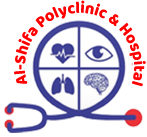Ptosis, also known as blepharoptosis, is defined as the drooping of the upper eyelid.
Clinical Features
- Drooping upper eyelid(s)
- Asymmetry between the eyes
- Fatigue or eye strain
- Obstruction of vision
- Head tilting or chin elevation
- Eyebrow elevation
- Impaired eye closure
- Redundant or saggy skin
Classification
- Congenital : Congenital ptosis refers to drooping of the upper eyelid that is present at birth or by 1 year of age.
- Blepharophimosis syndrome: Short palpebral fissures, congenital ptosis, epicanthus inversus, telecanthus.
- Congenital third cranial nerve palsy
- Congenital Horner’s syndrome: Mild ptosis, miosis, anhidrosis, heterochromia.
- Marcus Gunn jaw-winking syndrome: Misdirected innervation to ipsilateral levator muscle, resulting in lid elevation during mastication or jaw movement to the opposite side.
- Acquired Ptosis :
- Aponeurotic Ptosis: Also known as involutional ptosis, this is the most common type of acquired ptosis. Aging is the primary cause, as the tissues supporting the eyelid weaken over time.
- Neurogenic Ptosis: occurs due to damage or dysfunction of the nerves that control the muscles of the eyelid in conditions such as Horner’s syndrome, third nerve palsy, or myasthenia gravis
- Mechanical Ptosis: due to tumors, swelling, or scarring on or around the eyelid.
- Myogenic Ptosis: results from muscle dysfunction in conditions such as chronic progressive external ophthalmoplegia (CPEO) or muscular dystrophies.
- Traumatic Ptosis: due to injury to the eyelid muscles or nerves.
- Drug-Induced Ptosis: topical beta-blockers, pregabalin, dexamethasone, or morphine, can cause acquired ptosis as a side effect.
- Pseudoptosis due to inadequate support for the eyelid, often due to an empty socket or a shrunken eyeball, or when the eyelid on the opposite side is positioned higher, as seen in cases of lid retraction.
Grades of Ptosis
- Mild Ptosis: drooping of the upper eyelid by 1 to 2 millimeters (mm), with minimal obstruction of the pupil.
- Moderate Ptosis: Involves a drooping of the upper eyelid by 3 to 4 mm, partially obstructing the pupil but still allowing for adequate vision.
- Severe Ptosis: Involves a drooping of the upper eyelid by 5 millimeters or more, significantly obstructing the pupil and impairing vision.
Based on Levator function
When evaluating levator function with the frontalis muscle stabilized, gauge the movement of the upper eyelid margin from maximum downward gaze to maximum upward gaze- Excellent: An excursion of 13 mm or more
- Mild Ptosis: 8 to 11 mm of movement
- Moderate Ptosis: 5 to 7 mm of movement
- Severe Ptosis: 4 mm or less of excursion
Management Options
Management options for ptosis, or drooping of the upper eyelid, depend on various factors including the underlying cause, severity of the condition, and individual patient characteristics.
Here are some common management options:
Observation:
In cases of mild ptosis that do not significantly affect vision or cause discomfort, observation may be appropriate, especially if the condition is stable or not progressive.
Conservative Measures:
Eyelid Crutches: These are temporary devices attached to eyeglasses that help lift the drooping eyelid mechanically.
Ptosis Crutch Glasses: Specialized glasses with a built-in crutch to support the drooping eyelid.
Tape or Adhesive: Adhesive tape or strips can be used to lift the eyelid temporarily, providing symptomatic relief.
Eyelid Exercises: Certain exercises may be prescribed to strengthen the levator muscle, although their efficacy is debated.
Medical Treatment:
Topical Medications: In cases of myasthenia gravis-related ptosis, medications such as anticholinesterase inhibitors may be prescribed to improve muscle function temporarily.
Botulinum Toxin (Botox) Injections: Injections of botulinum toxin into the levator muscle can be used to induce temporary paralysis and reduce eyelid drooping, although effects typically last for a few months.
Surgical Correction:
Surgical intervention becomes imperative for congenital ptosis and other forms when non-surgical methods prove ineffective.
Levator resection entails shortening the levator muscle by excising a portion of it, where the muscle is not entirely paralyzed. Various approaches are employed for this purpose:
- Everbursch Technique: This method involves accessing the muscle through the skin.
- Blaskovics Technique: Accessing the muscle via the palpebral conjunctiva.
- Fasanella-Servat Procedure: This procedure involves excising a segment of the tarsal plate, palpebral conjunctiva, and Muller’s muscle alongside levator resection. It is often recommended for minimal ptosis cases.
- Motais Procedure: Utilizing the action of the superior rectus muscle to elevate the eyelid in instances where the levator muscle is paralyzed.
- Hess’s Procedure: In cases of paralysis of both the superior rectus and levator muscles, the frontalis muscle is employed to raise the eyelid.
- Frontalis Brow Suspension: . This procedure is indicated for severe (over 4 mm) ptosis with inadequate levator function, particularly in congenital ptosis cases.
- Aponeurotic Strengthening: This technique involves advancing the aponeurosis and is primarily utilized for aponeurotic disinsertion or involutional ptosis.
